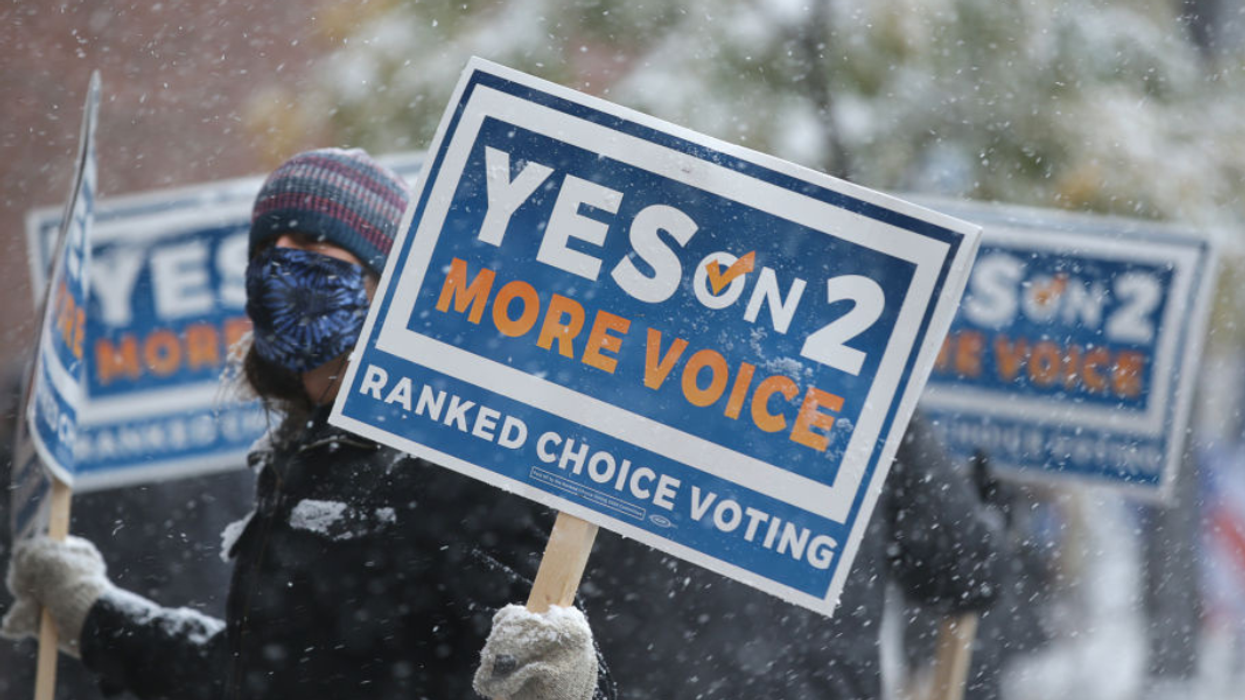Minta is a Professor in the University of Minnesota Political Science Department and a Board Member at FairVote Minnesota.
As part of an effort to end divisive and negative election campaigns and polarized governance, U.S. election officials and policymakers are turning to ranked choice voting (RCV), otherwise known as instant runoff voting, to make our elections more civil, fair, and representative.
More than 60 jurisdictions use ranked-choice elections, including two states, Maine and Alaska. RCV allows voters to rank candidates and ensures that the winning candidate has earned a majority of voter support. Under our current plurality system, candidates in crowded races can win with only small bases of support, but RCV ensures that the winner is the most widely supported candidate.
While most national media and political commentary have focused on the reform in Alaska and Maine, it's actually a state in the middle of the country that has been leading the way for over a decade and now has a chance to grow RCV even further – Minnesota.
As a Professor of Political Science at the University of Minnesota, I became interested in the potential of RCV to change the dynamics of electoral contests in our increasingly polarized political system. I am excited about the potential of this reform, and I am pleased to see lawmakers in the Minnesota Legislature take action on this important reform this year. While changes continue to be made, the current version of RCV legislation would provide a local option, giving more local officials the opportunity to implement RCV in a fashion that benefits their communities, and would also set up a task force to study and make recommendations for RCV adoption and implementation statewide. If the legislation passes, it would represent a broad expansion of RCV in a state where currently only charter cities, just a small percentage of cities, have the ability to adopt RCV, and would continue the state’s leadership on this simple but powerful reform.
Minneapolis adopted RCV by ballot measure in 2006 and first used ranked-choice elections in 2009, becoming the first city in the Midwest to use RCV. Four other cities in Minnesota have since followed: St. Paul, St. Louis Park, Minnetonka and Bloomington. The data on use of RCV over the past decade in Minnesota and around the country are promising. First, RCV positively impacts voter participation. In local nonpartisan elections, RCV eliminates the need for a local primary or runoff and allows all voters to consider the full slate of candidates in a single election when turnout is higher and more representative of the community. Having a single, more representative local election is especially important for communities of color who are underrepresented in primaries and runoffs.
RCV fosters more competitive races that contribute to higher voter turnout. For example, in Minneapolis, voter turnout for municipal elections has increased by nearly 24 percentage-points since 2005, the last election under the old system, with RCV directly responsible for an estimated 9.6-percentage-point increase in mayoral election turnout. Voter turnout has increased in other cities using RCV as well.
Second and not surprisingly, voters like RCV. Since RCV provides voters with more choice and voice in affecting the outcome of the election, voters are more satisfied with the electoral experience than under a plurality system, where votes can be wasted or spoiled. Polling of voters in ranked-choice elections backs this up. In 2021, 76 percent of Minneapolis voters and 61 percent of Bloomington voters reported that they like RCV and want to continue using it for municipal elections. Similarly, in 2019, 79 percent of Saint Louis Park voters said they want to continue using RCV in future municipal elections.
Despite claims that RCV might be challenging for voters, data shows that voters in ranked-choice elections – across all ethnic groups – overwhelmingly find it simple to use, including 85 percent of voters in Alaska, 95 percent of voters in New York City, and 86 percent of voters in Utah. This is consistent with data from Minnesota’s ranked-choice elections with voters overwhelmingly reporting that RCV is easy to use, across all demographic groups. In fact, a 2019 study of ranked-choice elections found little differences in how White, Black, and Latino voters reported understanding RCV.
Indeed, there is evidence to suggest that RCV benefits both candidates and voters of color. Candidates of color are much more likely to run and win in higher numbers. Unlike our current system, candidates of color in ranked-choice elections are not penalized by vote splitting when competing against other candidates of the same racial or ethnic group. RCV has increased opportunities for candidates of color to run and win in Minnesota cities that have adopted this voting system. In 2021, more than half of the candidates were women or people of color in Bloomington, and voters elected a woman and the first openly gay member to the open seat on the Bloomington City Council, and in Minneapolis, for the first time in history, a majority of Minneapolis city council members were people of color. We have seen similar benefits in cities across the country, from New York City to Salt Lake City where RCV helped to elect the most diverse city councils in history.
Finally, since candidates increase their chances of winning by earning the second-choice votes of their opponent’s supporters, candidates are incentivized to appeal beyond their base, to a broader range of voters and to avoid negative attacks. Minnesota voters report that campaigns are more civil under RCV and that candidates spent no or very little time criticizing each other. Given the increasing polarization of our political system, we really need to look at reforms that can change those dangerous dynamics.
While RCV is not a panacea for all our democracy woes, it is a promising and simple change we can make to counter our divisive politics, make our elections more inclusive, and strengthen our democracy, and with this year's legislation, Minnesota can expand RCV and continue to lead the way.



















